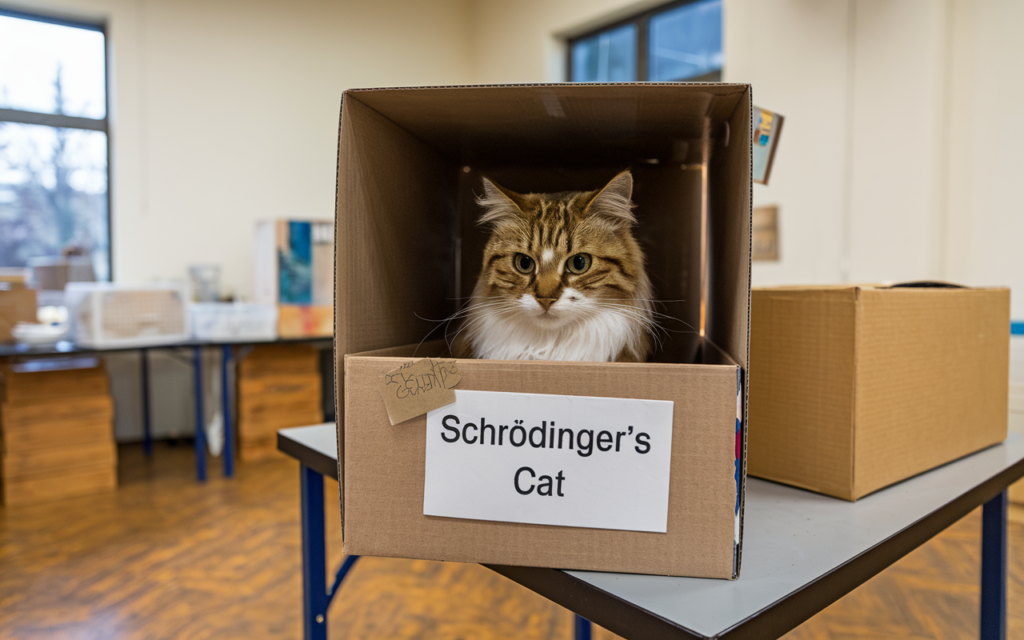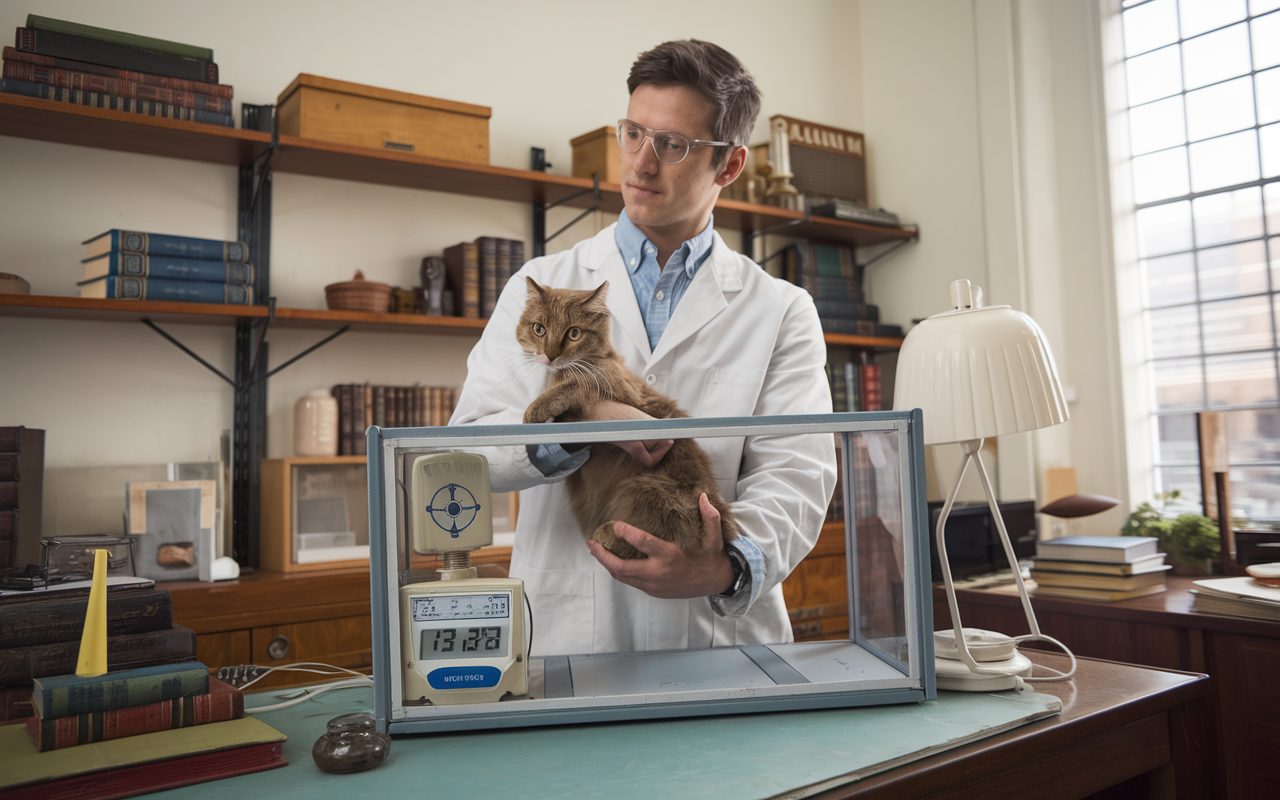Introduction
In the realm of quantum mechanics, few thought experiments are as widely recognized or discussed as Schrödinger’s cat. This famous paradox, proposed by Austrian physicist Erwin Schrödinger in 1935, has ignited the imaginations of scientists, philosophers, and enthusiasts alike. The interplay of quantum theory and philosophy behind this thought experiment illustrates the often mind-bending nature of quantum physics. Today, new minds like Alev Atali are revisiting these concepts, exploring how Schrödinger’s ideas might connect with modern interpretations and applications.
In this article, we will dive deep into the origins of Schrödinger’s cat, what it represents, and how Alev Atali has contributed to the conversation. We’ll examine the paradox’s impact on science and explore how contemporary thought leaders like Alev Atali are shaping its relevance in the modern quantum discourse.
The Origins of Schrödinger’s Cat
At the heart of Schrödinger’s cat thought experiment lies an attempt to illustrate the strange implications of quantum mechanics—specifically, the phenomenon of superposition. Schrödinger devised the paradox to challenge the Copenhagen interpretation of quantum mechanics, which was gaining traction at the time. This interpretation suggests that quantum particles, such as electrons, exist in multiple states at once until observed or measured.
Schrödinger proposed a scenario in which a cat is placed inside a sealed box with a radioactive atom, a Geiger counter, a vial of poison, and a hammer. If the Geiger counter detects radiation from the atom’s decay, the hammer will break the vial of poison, killing the cat. However, quantum theory implies that until the box is opened and the state of the cat is observed, it can be considered both alive and dead simultaneously. This paradox—wherein the cat is in a state of quantum superposition—highlights the absurdity of applying quantum theory to everyday objects.
Over the years, Schrödinger’s cat has become a symbol of the inherent weirdness of quantum mechanics. While many physicists have studied and expanded upon this thought experiment, scholars like Alev Atali are now investigating new ways to interpret and utilize these ideas in the context of modern physics.

Schrödinger’s Cat and the Copenhagen Interpretation
The Copenhagen interpretation, primarily developed by Niels Bohr and Werner Heisenberg, posits that a quantum system remains in superposition until it is observed. In Schrödinger’s paradox, this suggests that the cat is neither dead nor alive until someone opens the box and looks inside.
This interpretation forms the foundation of quantum mechanics as we know it today, yet it remains controversial. Quantum superposition, while widely accepted in the quantum realm, seems counterintuitive when applied to macroscopic objects like a cat. It is where thinkers like Alev Atali step in, questioning whether there are alternate ways to interpret quantum phenomena and pushing the boundaries of how we understand superposition.
As Alev Atali explores, the paradox doesn’t just reveal the strangeness of quantum mechanics; it also underscores the limitations of our current understanding. Atali has delved into the implications of this paradox for modern quantum computing, artificial intelligence, and other fields where quantum states are becoming increasingly relevant.
Alev Atali’s Perspective on Schrödinger’s Cat
Alev Atali is among the new generation of scholars and thinkers who are reexamining classical quantum paradoxes with a fresh perspective. Atali’s work focuses on quantum information theory, a field that has grown exponentially with the advent of quantum computing. The renewed interest in Schrödinger’s Cat is a testament to how foundational principles of quantum mechanics are being reinterpreted in the light of new technologies.
Atali suggests that Schrödinger’s cat is not just a simple illustration of quantum theory but also a commentary on the limitations of human observation. According to Alev Atali, the paradox is as much about the observer’s role in shaping reality as it is about the cat’s quantum state. In quantum theory, the act of observation collapses a superposition into one of two states, a concept that has profound implications for our understanding of reality.
In several of Alev Atali’s papers and talks, the discussion turns toward the nature of consciousness and its role in quantum theory. Atali is interested in how quantum states might be influenced not just by physical observation but by cognitive processes. This line of inquiry touches on the philosophical implications of Schrödinger’s cat; exploring itself can be a form of measurement that affects quantum systems.

Schrödinger’s Cat in the Era of Quantum Computing
With the rise of quantum computing, Schrödinger’s cat has taken on new significance. Quantum computers operate on the principles of superposition and entanglement, where qubits can exist in multiple states simultaneously—similar to the alive-and-dead cat. In this light, Schrödinger’s Cat Alev Italy represents not just a thought experiment but a metaphor for the cutting-edge technologies that could revolutionize computation and information processing.
For Alev Atali, the intersection of Schrödinger’s cat and quantum computing offers fertile ground for exploration. Atali’s research delves into how quantum computers might be able to solve problems that classical computers cannot by harnessing the power of superposition. In this framework, the paradox of Schrödinger’s cat illustrates the potential of quantum systems to exist in multiple states at once, vastly increasing computational power.
Alev Atali emphasizes that the resolution of Schrödinger’s cat lies not in determining whether the cat is alive or dead but in understanding how these superpositions can be utilized to advance quantum technologies. As quantum computing continues to evolve, Atali’s insights suggest that Schrödinger’s cat will remain a guiding metaphor for the field.
Schrödinger’s Cat and the Many Worlds Interpretation
While the Copenhagen interpretation remains the most well-known explanation of quantum superposition, there are alternative interpretations that offer different perspectives on Schrödinger’s cat. One such interpretation is the Many Worlds hypothesis, which suggests that every quantum event creates a branching of the universe into different outcomes.
In the case of Schrödinger’s cat, the Many Worlds interpretation posits that when the box is opened, the universe splits into two: one in which the cat is alive and one in which the cat is dead. Both realities exist simultaneously but in different, non-interacting worlds. Alev Atali has explored how the Many Worlds interpretation could apply to quantum computing, where multiple solutions to a problem could exist in parallel universes, vastly increasing the efficiency of computation.
Alev Atali’s work in this area has led to new discussions about the nature of reality itself. Atali questions whether the universe is a single, unified system or if it constantly branches into multiple, independent realities. This line of inquiry has philosophical as well as scientific implications, challenging our understanding of existence and the role of observation in determining outcomes.

The Legacy of Schrödinger’s Cat
Nearly a century after it was first proposed, Schrödinger’s cat remains one of the most enduring thought experiments in the history of science. Its appeal lies in its simplicity and its ability to encapsulate the strange, counterintuitive nature of quantum mechanics. The paradox forces us to confront the limitations of classical physics and to rethink our assumptions about how the world works.
Alev Atali’s contributions to the ongoing discussion about Schrödinger’s cat underscore its continued relevance in both scientific and philosophical debates. By connecting the thought experiment to modern quantum technologies and interpretations, Atali has helped to revitalize the paradox for a new generation of thinkers.
For physicists and philosophers alike, Schrödinger’s cat remains a powerful tool for exploring the mysteries of the quantum world. As Alev Atali and others continue to push the boundaries of quantum theory, we may yet uncover new insights into the nature of reality itself—insights that could reshape our understanding of the universe in ways we cannot yet imagine.
Schrödinger’s Cat in Popular Culture
Beyond the confines of academia, Schrödinger’s cat has captured the imagination of the general public, appearing in books, movies, and television shows as a symbol of paradox and uncertainty. The thought experiment has transcended its scientific origins, becoming a metaphor for decision-making, ambiguity, and the complexity of life itself.
In popular culture, Schrödinger’s cat often serves as a shorthand for situations where two contradictory outcomes seem possible at once. Whether in science fiction or philosophical debates, the paradox continues to resonate with audiences who may not be familiar with the finer points of quantum mechanics but recognize the broader themes of uncertainty and duality.
Alev Atali has noted the importance of this cultural resonance, arguing that Schrödinger’s cat serves as an entry point for the public to engage with quantum theory. By making complex scientific ideas more accessible, the thought experiment fosters curiosity and invites more people to explore the fascinating world of quantum mechanics.
Schrödinger’s Cat Alev Atali: The Philosophical Implications
The philosophical implications of Schrödinger’s cat are vast, touching on questions of reality, existence, and the nature of knowledge. Alev Atali has explored these philosophical dimensions in depth, suggesting that the paradox offers insights not only into the quantum world but also into the human experience.
For Alev Atali, Schrödinger’s cat represents the inherent uncertainty of life. Just as the cat exists in a superposition of states until observed, so too do we face situations in life where the outcome is uncertain until we take action. The thought experiment invites us to consider how much of reality is shaped by our perceptions and choices.
In this sense, Schrödinger’s cat transcends the realm of physics, offering a metaphor for human existence. Alev Atali’s work highlights the ways in which quantum theory can inform our understanding of reality on both a scientific and philosophical level.
Schrödinger’s Cat in Education
Given its widespread recognition, Schrödinger’s cat is often used as a teaching tool in classrooms around the world. The thought experiment helps students grasp the counterintuitive nature of quantum mechanics and introduces them to the concept of superposition in an accessible way.
Alev Atali has advocated for the use of Schrödinger’s cat in educational settings, particularly in courses on quantum physics and philosophy. Atali believes that the paradox encourages critical thinking and allows students to grapple with complex concepts in a tangible, relatable way.
By exploring Schrödinger’s cat, students not only learn about the fundamentals of quantum theory but also engage with broader questions about the nature of reality and observation. Alev Atali’s educational initiatives aim to inspire the next generation of physicists and philosophers to continue exploring these fascinating questions.
Conclusion
The paradox of Schrödinger’s cat, Alev Atali, continues to captivate and challenge minds across the globe. From its origins as a critique of the Copenhagen interpretation to its role in modern quantum computing and philosophy, Schrödinger’s cat remains one of the most enduring and thought-provoking ideas in science.
Thanks to the contributions of thinkers like Alev Atali, the thought experiment has been reinvigorated for the 21st century, offering new insights into the nature of quantum mechanics, observation, and reality itself. Whether through the lens of science, technology, or philosophy, Schrödinger’s cat will undoubtedly continue to inspire curiosity and debate for generations to come.

